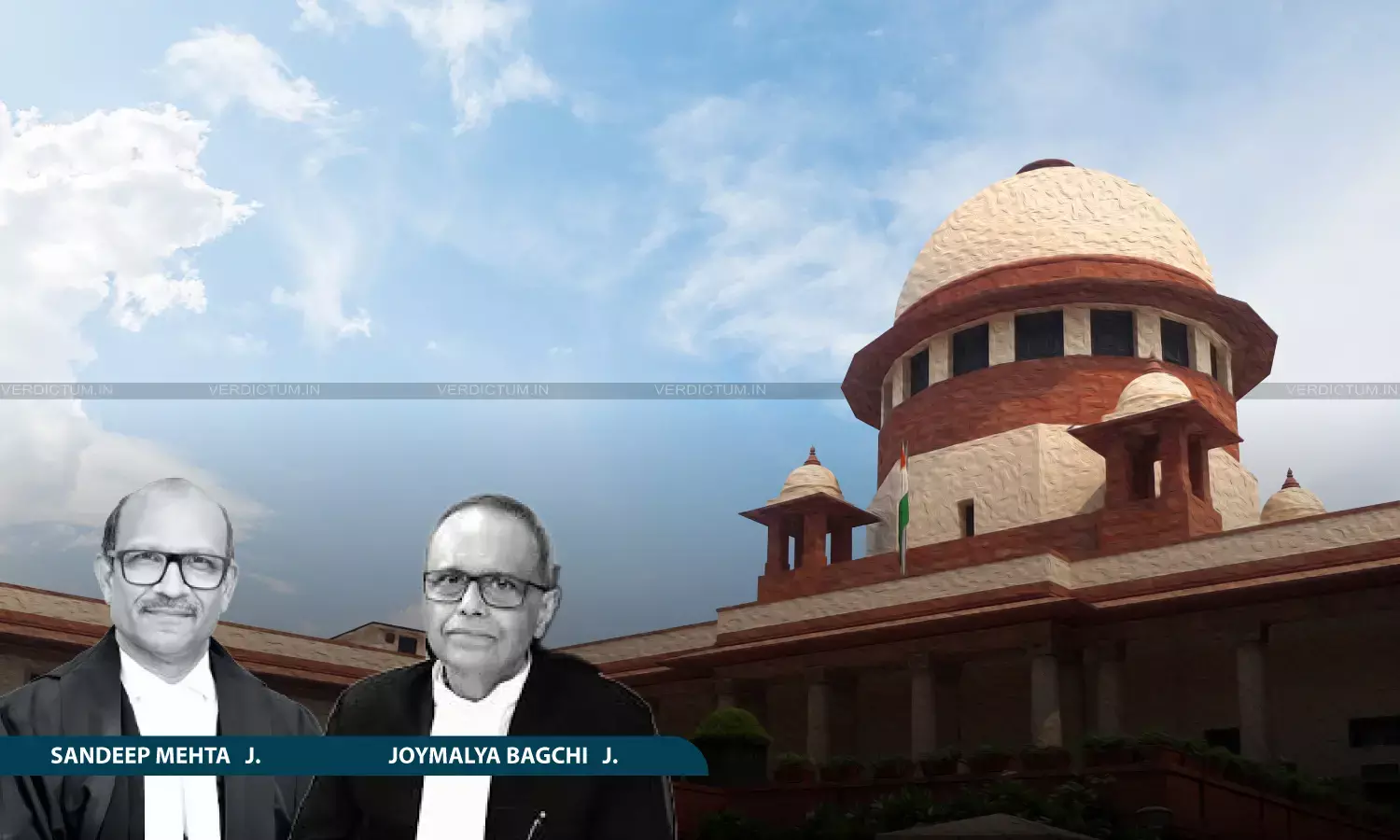Being Computer Generated Secondary Evidence, Call Detail Records Are Inadmissible Without Certificate U/S. 65B Evidence Act: Supreme Court
The Supreme Court set aside the conviction of persons accused of murder by strangling as Prosecution failed to discharge the initial onus.

Justice Sandeep Mehta, Justice Joymalya Bagchi, Supreme Court
The Supreme Court held that the Call Detail Records (CDR), which are computer generated secondary evidence, are inadmissible in law without certification under Section 65B of the Indian Evidence Act.
In the present case, the Prosecution had opportunity to fill the lacuna by producing the requisite certificate for CDR under Section 65-B(4) but did not do so.
The Bench of Justice Sandeep Mehta and Justice Joymalya Bagchi observed, “Appellants during trial raised objections to admissibility of the secondary electronic evidence relating to Rahil which was marked as exhibit PW23/B-D. Thereby the prosecutor was put on due notice and had opportunity to fill the lacuna by producing the requisite certificate under Section 65-B(4) but did not do so...In these circumstances we are inclined to apply the ratio in PV Anvar and Khotkar to the case and hold that the exhibits are inadmissible in law being secondary evidence without certification.”
Case Brief
The main accused, now dead, entered into a sale agreement with the deceased-victim, however, before the sale deed could be executed, the deceased-victim started constructing a boundary wall on the property. This resulted in a skirmish between the deceased and the accused and her associates.
The deceased went missing and later, his dead body was found in Haridwar. The cause of death was asphyxia due to strangulation. An FIR was filed against the main accused lady, her brother, son and husband.
The CDR between the accused persons were also brought up and the Tower location of accused person’s phone parabolises his presence at place of occurrence.
The trial court convicted the lady and her brother for murder, while the son and the husband were acquitted. The State challenged the acquittal before High Court and the High Court reversed the acquittal of the appellants and held them guilty under Section 302/34 IPC along with the accused lady. Accordingly, the appeal against such conviction was filed before the Supreme Court.
Court’s Analysis
The Court opined that in an appeal against acquittal, the appellate court would not interfere with the finding of the trial court unless the same finding is wholly perverse or against the weight of evidence on record. In the event an acquittal is based on findings which are reasonable and plausible, appellate court would be slow to interfere with the same as the presumption of innocence stands re-enforced by the acquittal.
“An incriminating fact is said to be ‘proved’ when after considering the matters before it, the court believes it to exist or considers its existence so probable that a man of ordinary prudence would act as if the same existed”, the Court added.
With regard to the CDRs, the Court observed that the finding of High Court that the accused person's presence at the place of occurrence is established was based on on inadmissible evidence as certificate under Section 65-B(4) of the Indian Evidence Act was not filed.
The Court held that the exhibits are inadmissible in law being secondary evidence without certification and added, "Even if the CDRs and other electronic records were admitted in evidence they merely contain the cell tower location information, that is to say, which tower mobile phone was connected to and how long the calls lasted when it was connected to that tower. These data give an approximate area corresponding to the operational area of the cell tower and not the exact site where the phone is located."
Furthermore, the Court noted that no evidence is led regarding the range of the tower and cell tower ranges widely vary and are dependent on a number of variables.
The Supreme Court said, "...it is hazardous to rely solely on this evidence to prove his presence at his residence beyond doubt. Finally, telephonic exchanges...would not lead to an inference of conspiracy to murder..."
The Court list down various lacunas in the case of Prosecution: no direct evidence that the deceased-victim actually went to the house of the accused; error in relying on a speculative inference that all inmates must invariably be present in the house at all times; non-production of requisite certificate under Section 65-B(4) of the Indian Evidence Act
In these circumstances, the Court was of the view that the High Court erred in relying on a speculative inference that all inmates must invariably be present in the house at all times to reverse the acquittal and convict the appellants; telephonic exchanges between accused persons would not lead to an inference of conspiracy to murder. Thus, the Supreme Court set aside the judgment.
Accordingly, the Appeal was allowed.
Cause Title: Rahil & Anr V. State (Govt. of N.C.T. of Delhi) (Neutral Citation:2025 INSC 858 )
Click here to read/download Order


